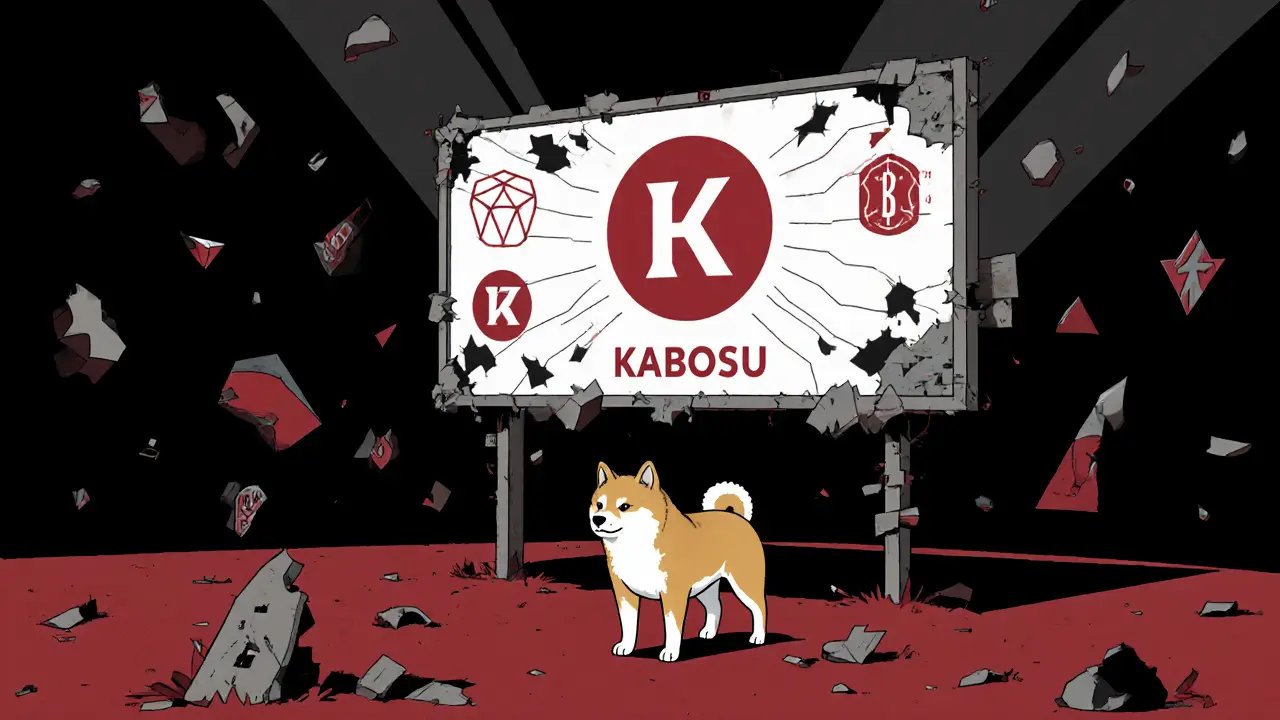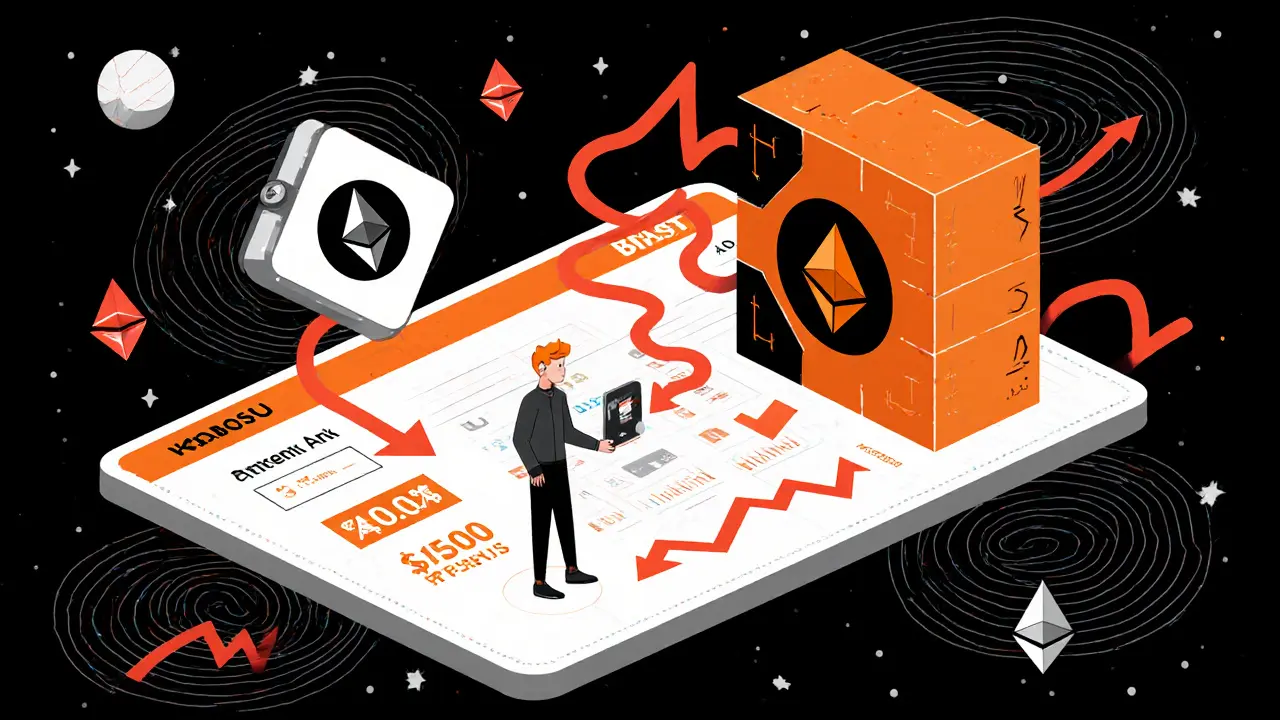What is Kabosu Inu (KABOSU) crypto coin? The truth behind the Dogecoin meme token
 Jan, 29 2025
Jan, 29 2025
KABOSU Investment Calculator
Based on current KABOSU data from October 2025: Price = $0.000062091, Market Cap = $201,000, Total Supply = 1 trillion tokens. Calculations include typical DEX trading fees and slippage.
Important Warning: KABOSU has extremely low liquidity with trading volume under $220. Selling even small amounts can cause massive price drops (slippage up to 25%). The article shows that 98% of holders lose money due to this.
Kabosu Inu (KABOSU) isn’t just another meme coin. It’s a digital tribute to a real dog - Kabosu, the Shiba Inu whose face became the original image behind Dogecoin. Launched in May 2023, this ERC20 token on the Ethereum blockchain was built not to make traders rich, but to honor a rescued pet and, at least in theory, help other dogs in need. But behind the cute dog pictures and emotional backstory lies a crypto asset with almost no liquidity, questionable charity claims, and a market that barely exists.
Who was Kabosu, and why does it matter?
Kabosu was a stray dog rescued from a shelter in Japan by her owner, Atsuko Sato, in 2008. She became an internet sensation after a photo of her skeptical expression went viral in 2013. That same image was used as the logo for Dogecoin, one of the first and most famous meme cryptocurrencies. Dogecoin exploded in popularity, but Kabosu herself remained a quiet symbol - until KABOSU coin came along. The creators of Kabosu Inu didn’t just copy the image. They claimed to build a project around her legacy. Their website, welovekabosu.com, says the token exists to "celebrate the spirit of Kabosu" and to fund animal welfare charities. But here’s the catch: there’s no public proof that any donations have ever been made. A single verified review on Trustpilot from May 2024 called it out directly: "The website looks nice but there’s no evidence of actual donations to animal charities as promised."How does KABOSU work technically?
Kabosu Inu runs as an ERC20 token on the Ethereum network. That means it uses the same infrastructure as most other crypto tokens - you need a wallet like MetaMask, some Ethereum (ETH), and access to a decentralized exchange like Uniswap V2 to buy it. Its contract address is 0xbadff0e...aaf495cf0, and it was migrated from an older version in September 2024. That migration confused early holders. Some thought their tokens were worthless. They weren’t - but it added to the chaos. The total supply is capped at 1 trillion KABOSU tokens. As of October 2025, about 962 billion are in circulation. That’s a lot of tokens - but not a lot of value. At $0.000062091 per token, the total market cap sits around $201,000. For comparison, Dogecoin’s market cap is over $13 billion. Shiba Inu’s is $3.5 billion. Kabosu Inu is so small it doesn’t even rank in the top 1,000 coins on CoinMarketCap - it’s #7147.Where can you buy KABOSU, and how hard is it?
You can’t buy Kabosu Inu on Coinbase, Binance, or any major exchange. It’s listed only on Uniswap V2, a decentralized platform designed for experienced crypto users. To buy it, you need to:- Set up a Web3 wallet like MetaMask
- Buy Ethereum (ETH) from a fiat-to-crypto exchange
- Transfer ETH to your wallet
- Connect your wallet to Uniswap V2
- Search for KABOSU/WETH trading pair
- Trade ETH for KABOSU with high slippage (often 15-25%)

Why is KABOSU’s market performance so bad?
The numbers tell the story. The all-time high for KABOSU was $0.00001870 in May 2024. As of October 2025, it’s trading at $0.000062091 - a drop of 98.1% from its peak. That’s not a correction. That’s a collapse. Its 24-hour trading volume is under $220 on CoinGecko. On CoinStats, it’s slightly higher at $15,000 - but that’s still less than what a single tweet from Elon Musk can move in Dogecoin. Only 3,030 people hold KABOSU. That’s fewer than the members of a small Discord server. Most of them aren’t investors - they’re nostalgic Dogecoin fans who bought in hoping to support a cause. But without real utility, community growth, or transparent charity work, there’s no reason for new buyers to join. Chainalysis reported in August 2024 that 78% of KABOSU holders are "meme coin speculators" - people chasing quick flips, not long-term value.Expert opinions: Is KABOSU a scam or just dead?
Experts don’t call it a scam. They call it irrelevant. CryptoSlate’s "MemeCoinWatcher" wrote in May 2024: "KABOSU represents the speculative extreme of meme coins with its near-zero utility beyond nostalgia for Dogecoin’s origins." CoinDesk’s Jane Chen added: "Tokens like KABOSU that rely solely on historical meme connections without developing utility or community infrastructure are highly vulnerable to market corrections." The bigger red flag? The charity angle. HTX claims the project "dedicates a portion of its proceeds to dog charities," and that holders vote on where donations go. But no public ledger, no blockchain-tracked transfers, no receipts from any animal shelter have ever been published. The only proof is a website saying it happens. That’s not enough for regulators - or for ethical investors. DLx Law, a crypto legal firm, warned in September 2024 that KABOSU could face SEC scrutiny. Promising charitable donations without proof can be seen as misleading advertising - or worse, a securities violation.
What’s the future of Kabosu Inu?
The project hasn’t updated its website since July 2024. Its Telegram group, once at 2,400 members, has shrunk by 23% since January 2025. No new features, no partnerships, no roadmap. Delphi Digital’s 2025 Meme Coin Outlook predicts a 92% chance that tokens like KABOSU become worthless within 18 months. Messari’s Ryan Watkins says micro-cap meme coins without active communities are already dying as the market tightens. The only thing keeping KABOSU alive is emotion. People still love Kabosu the dog. They still remember Dogecoin’s early days. But love doesn’t pay for gas fees. It doesn’t move markets. It doesn’t build ecosystems.Should you buy KABOSU?
If you’re buying because you want to support animal charities - don’t. There’s no proof it’s happening. If you’re buying because you think it’ll go up 10x - you’re gambling. The odds are worse than roulette. If you’re buying because you feel nostalgic for the early days of meme coins - fine. But treat it like a $5 souvenir, not an investment. There’s nothing wrong with honoring a dog who inspired a global movement. But turning that into a crypto asset without substance, transparency, or community is a recipe for failure. KABOSU isn’t a coin. It’s a memorial - and memorials don’t generate returns.What’s next for meme coins like KABOSU?
The meme coin era isn’t over - but it’s changing. New tokens are now built with utility: staking, governance, real-world use cases. Even Dogecoin and Shiba Inu have layered on infrastructure. KABOSU didn’t. It stayed stuck in 2013. And in crypto, staying stuck means getting left behind. If you want to support dogs in need, donate directly to a shelter. If you want to invest in crypto, look for projects with code, teams, and transparency. KABOSU has none of those. It only has a picture of a dog. And that’s not enough anymore.Is Kabosu Inu (KABOSU) a good investment?
No, KABOSU is not a good investment. It has extremely low liquidity, no real utility, no verifiable charity contributions, and a market cap under $210,000. Its price has dropped over 98% from its all-time high. Only 3,030 people hold it, and trading volume is minimal. Any potential gains are speculative and risky.
Can you buy Kabosu Inu on Binance or Coinbase?
No, Kabosu Inu is not listed on any major centralized exchanges like Binance, Coinbase, or Kraken. It’s only available on decentralized exchanges (DEXs), primarily Uniswap V2 on the Ethereum network. You need a Web3 wallet like MetaMask and some Ethereum to trade it.
Does Kabosu Inu actually donate to dog charities?
The project claims to donate a portion of proceeds to dog charities and says holders vote on where funds go. But there is no public proof - no blockchain transactions, no receipts, no announcements from charities. A verified Trustpilot review from May 2024 explicitly stated: "There’s no evidence of actual donations." Without transparency, these claims remain unverified.
Why is KABOSU’s price so low compared to Dogecoin?
KABOSU lacks the community, exchange listings, and utility that Dogecoin has. Dogecoin is accepted by merchants, has a large active user base, and is listed on top exchanges. KABOSU has none of that. It’s a niche meme coin with no growth, no development, and minimal trading volume. Dogecoin’s market cap is over $13 billion; KABOSU’s is under $210,000.
What happened to the KABOSU contract migration?
In September 2024, the KABOSU team migrated the token to a new smart contract address. This caused confusion among early holders who weren’t sure if their old tokens were still valid. While the migration didn’t erase holdings, it added distrust and made the project look unprofessional. Many users lost tokens during the process due to poor communication.
Is KABOSU at risk of being shut down by regulators?
Yes. Crypto law firm DLx Law warned in September 2024 that KABOSU’s claims of donating to charities without proof could be considered misleading or even a security violation under SEC guidelines. If regulators investigate and find no donations were made, the project could face legal action. The lack of transparency makes it a high-risk target.